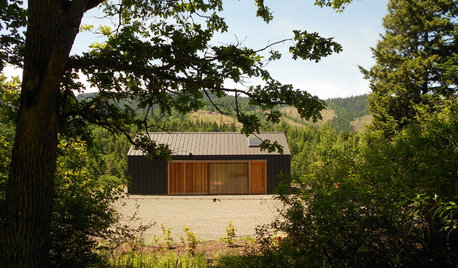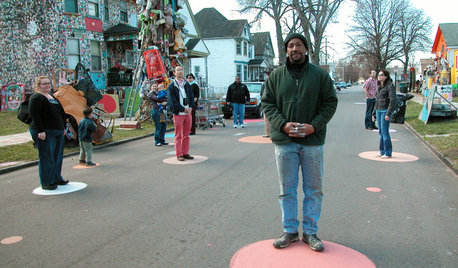Tractor start problem, stumped. Please help
ruggs183
13 years ago
Related Stories

DECORATING GUIDESHow to Decorate When You're Starting Out or Starting Over
No need to feel overwhelmed. Our step-by-step decorating guide can help you put together a home look you'll love
Full Story
LIVING ROOMSA Living Room Miracle With $1,000 and a Little Help From Houzzers
Frustrated with competing focal points, Kimberlee Dray took her dilemma to the people and got her problem solved
Full Story
PETS6 Ways to Help Your Dog and Landscape Play Nicely Together
Keep your prized plantings intact and your dog happy too, with this wisdom from an expert gardener and dog guardian
Full Story
OUTBUILDINGSA Modern Tractor Shed Stakes Its Claim in the Landscape
Standard materials used in an artful way create a sophisticated outbuilding and a stylish welcome home
Full Story
GARDENING FOR BUTTERFLIESA Quick-Start Guide to Bird-Watching for Fun and Learning
Set out some seed and grab your field guide. Bird-watching is an easy, entertaining and educational activity for the whole family
Full Story
GARDENING GUIDESHow to Stop Worrying and Start Loving Clay Soil
Clay has many more benefits than you might imagine
Full Story
INSIDE HOUZZInside Houzz: Starting From Scratch in a Manhattan Apartment
Even no silverware was no sweat for a Houzz pro designer, who helped a globe-trotting consultant get a fresh design start
Full Story
MOST POPULAROrganized From the Start: 8 Smart Systems for Your New House
Establishing order at the outset will help prevent clutter from getting its foot in the door
Full Story
HOME OFFICESQuiet, Please! How to Cut Noise Pollution at Home
Leaf blowers, trucks or noisy neighbors driving you berserk? These sound-reduction strategies can help you hush things up
Full Story
FUN HOUZZDecorated Houses Help Save a Detroit Neighborhood
Art's a start for an inner-city community working to stave off urban blight and kindle a renaissance
Full StorySponsored






ruggs183Original Author
rcbe
Related Professionals
Derry Landscape Architects & Landscape Designers · Tempe Landscape Contractors · Andover Landscape Contractors · Burien Landscape Contractors · Deer Park Landscape Contractors · Inglewood Landscape Contractors · New Cassel Landscape Contractors · Ridgewood Landscape Contractors · Quartz Hill Landscape Contractors · Huntington Park Window Contractors · Lakewood Window Contractors · Leicester Window Contractors · Muttontown Window Contractors · Rio Linda Window Contractors · Suamico Window Contractorsruggs183Original Author
mownie
ruggs183Original Author
deeredoctor
baymee
mownie
mcherchio
mownie
mcherchio
mownie
mcherchio
mownie
ruggs183Original Author
baymee
deeredoctor
mownie
mcherchio
ruggs183Original Author
mownie
ruggs183Original Author
RossWeldThis
rcbe